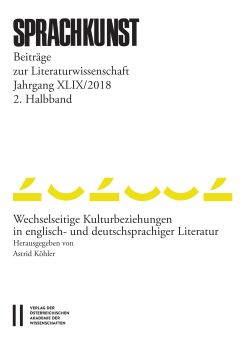
Sprachkunst Jahrgang XLIX/2018, 2. Halbband, pp. 65-90, 2019/09/16
Beiträge zur Literaturwissenschaft
Jahrgang XLIX/2018, 2. Halbband

The works of these two key Modernist artists exhibit a number of similar features: Joyce’s abandonment of personal and representational narration can be likened to Schönberg’s rejection of functional theories of harmony. Through rational constructions – based on structural constraints such as twelve-tone sequences and the Gilbert and Linati schemata – both artists systematically explore the limits and possibilities of their chosen material, with Schönberg’s emancipation of dissonance and Joyce’s highly artificial idiom in ›Finnegans Wake‹ expanding the possibilities of associating musical or literary meaning.